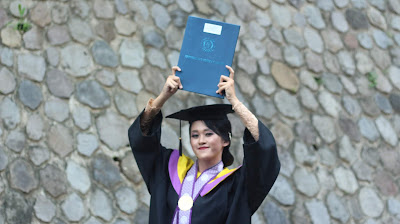Definition of Writing
In order to understand the writing well, the writer will present some
definitions of writing. According to Meyers (2005) in Fathali and
Sotoudehnama (2015, p. 2) writing is a way to produce language, which
you do naturally when you speak. There are two ways in producing
language, those are writing and speaking. The difference between writing
and speaking is the media used. In speaking, to convey ideas, people do it
orally. Meanwhile, in writing, to make letters and symbols, pen or pencil
and paper are needed.
Moreover, according to Hyland (2003, p. 9) writing is a way of sharing
personal meanings and writing courses that emphasize the power of the
individual to construct his or her own views on a topic. In addition, Nunan
(2003, p. 98) also defines writing as the process of thinking to invent
ideas, thinking about how to express into good writing, and arranging the
ideas into statement and paragraph clearly. People tend to write to convey
their personal ideas of something. By arranging their ideas into clear
statement, the writer hopes that the reader will understand what is meant
by the writer.
While Rivers (1981, p. 294) states that writing is conveying
information or expression of original ideas in a consecutive way in new
language. Furthermore, Troyka (1987) as cited in Handayani (2013, p. 1)
also states that writing is a way of communicating a message to a reader
for purpose. The writer’s purpose is to provide information which can be
useful to the readers. By writing, the writers indirectly keep in touch with
the readers.
From those explanations above, it can be concluded that writing is a
process of thinking to produce language to share and communicate
personal leanings and writing courses which provide useful information
for the readers.
References
Fathali, Somayeh., Sotoudehnama, Elaheh. (2015). The Impact of Guided Writing
Practice on The Speaking Proficiency and Attitude of EFL Elementary
Learners. The Journal of Teaching Language Skills, 7(1), 1-25.
Handayani, A.A Komang., Dantes Nyoman.,& Ratminingsih, Ni Made. (2013).
The Effect of Guided Writing Strategy and Students’ Achievement 54
Motivation on Students’ Writing Competency. e-Journal Program
Pasca Sarjana Universitas Pendidikan Ganesha. 1. 1-12
Hyland, Ken. (2003). Second Language Writing. USA: Cambridge University
Press.
Rivers, W.M. (1981). Teaching Foreign Language Skills. Chicago: University of
Chicago Press.
